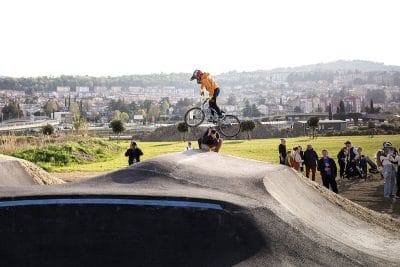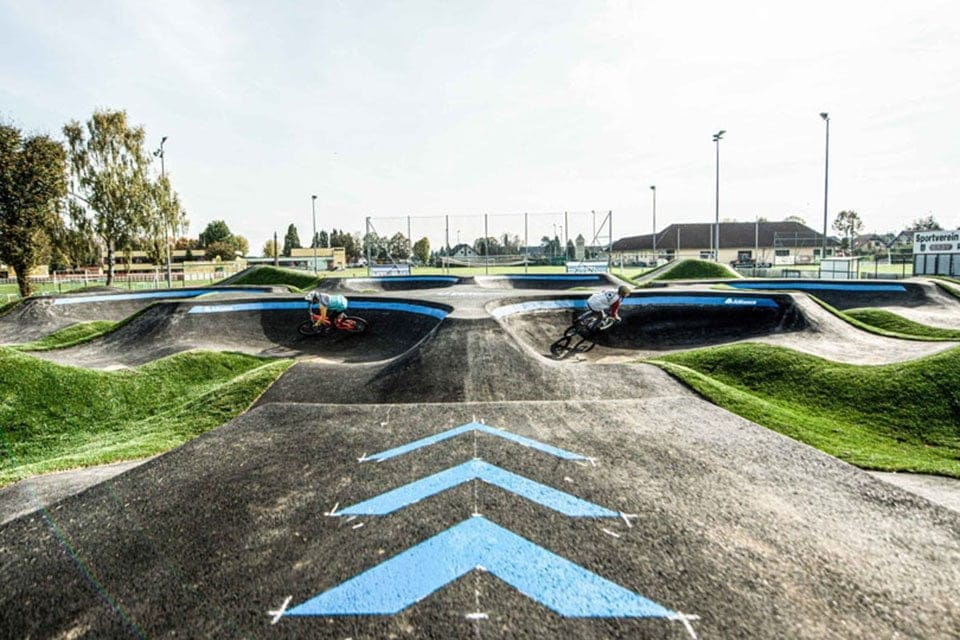
What is a pump track?
A pump track is a continuous, looping circuit of rollers, berms (banked turns), and transitions designed to be ridden without pedaling. Instead, riders generate momentum by using body movement — “pumping” through rises and dips — which makes riding dynamic, fun, and accessible for almost anyone.
More than just a cycling track, a pump track often becomes a community hub — welcoming toddlers on scooters, skateboarders, scooters, skaters, and seasoned bikers alike. It’s a place where all-ages and all-wheels come together, from ages 2 to 70+.
What Makes a Pump Track Special?
- Universal usage (bikes, skateboards, scooters, skates)
- Outdoor, active recreation for all ages
- Great for fitness — improves balance, coordination, posture
- Community building — gathering point for riders, families, friends
- Low maintenance when built properly — a permanent, durable facility
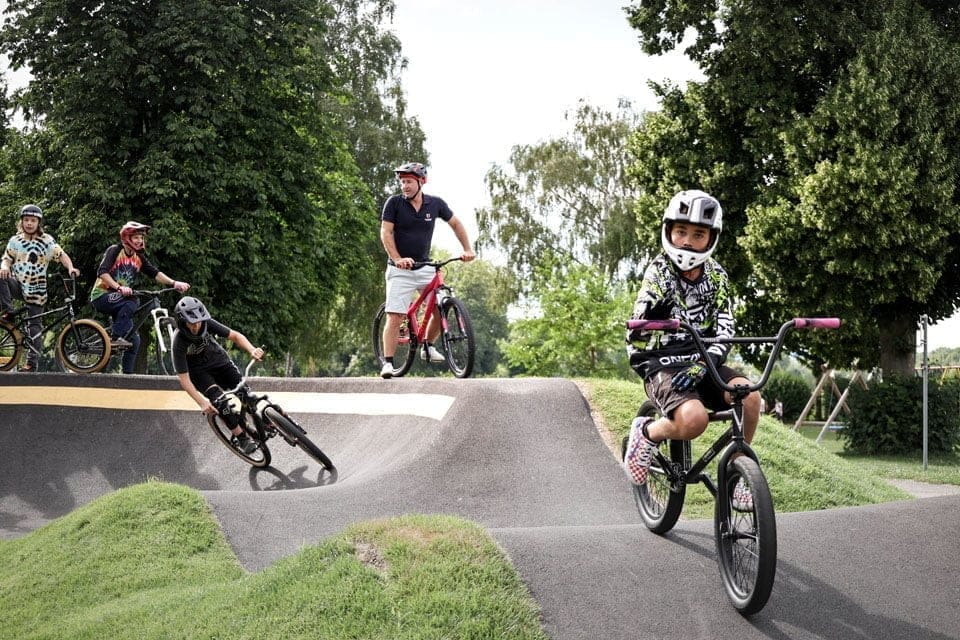
A Brief History: From Dirt to Asphalt — The Evolution of Pump Tracks
Pump tracks began decades ago, inspired by BMX and early skatepark “snake runs.” Initially, they were dirt tracks — low cost and easy to build, primarily for cyclists. However, dirt tracks had drawbacks: they were weather-dependent and required frequent upkeep.
Later, concrete entered the scene — more durable, but expensive and costly to build. The real breakthrough came with asphalt pump tracks: offering durability, smooth riding surfaces, and versatility for many types of wheeled users. Asphalt tracks are now the norm worldwide.
Thanks to their affordability and all-weather usability, asphalt pump tracks have sparked a global boom — with many communities installing tracks as urban-friendly, inclusive recreation spots.
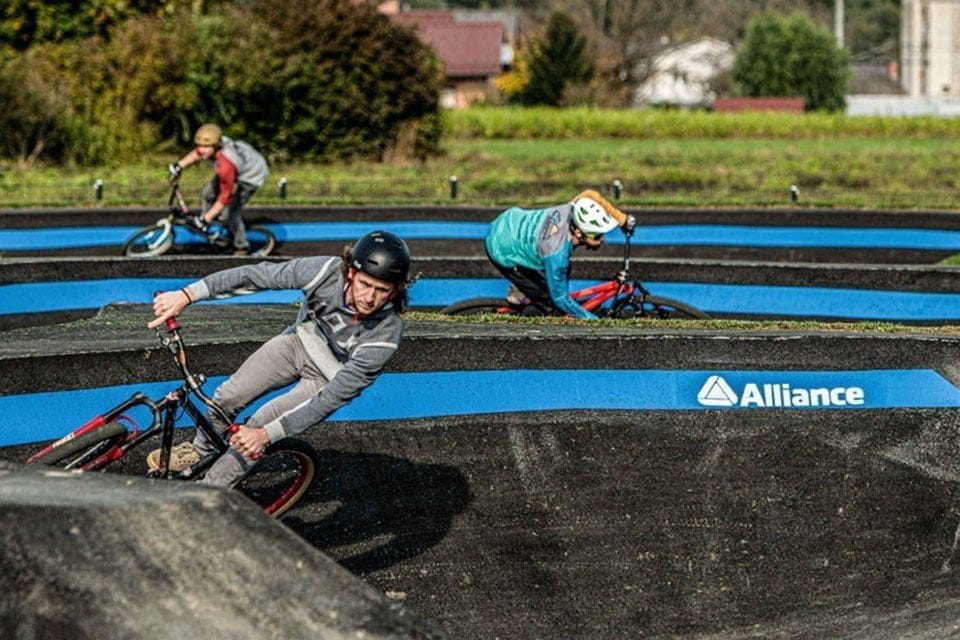
Why Pump Tracks Are Great: Benefits for Riders & Communities
>> Fitness, Skill & Fun
Riding a pump track is more than recreation — it’s a gentle but effective workout. As riders shift their body weight, they build balance, coordination, core strength, and overall bike/board control.
For kids, it’s a safe first step into wheeled sports. For adults, it’s a fun way to stay active — potentially even more engaging than a typical run or gym session.
>> Inclusive & Versatile
Whether it’s a child on a scooter, a teenager on a skateboard, or an adult on a mountain bike — pump tracks are inclusive. Their design works for all wheel types and skill levels, creating a shared space for diverse riders.
>> Community & Urban Value
Pump tracks often act as community anchors. They bring neighbors together, encourage outdoor play, and add recreational value to urban spaces or parks — perfect for cities or towns with limited space.
>> Low-Maintenance, Long-Lasting Infrastructure
Once built correctly — especially with asphalt — pump tracks are durable and require minimal upkeep. That makes them a cost-effective, long-term investment for municipalities or community groups.
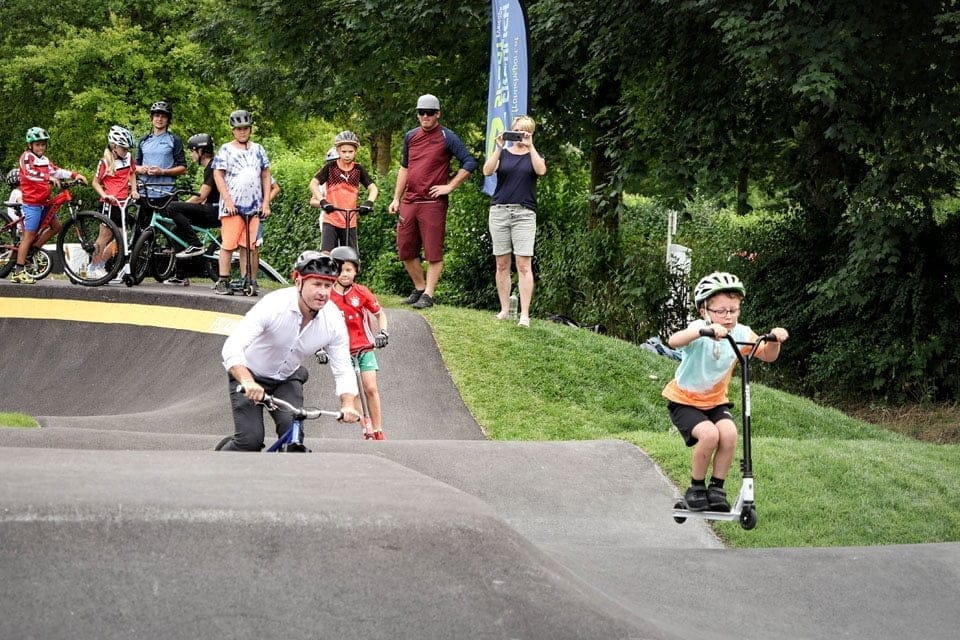
Types of Pump Tracks: Dirt, Concrete, Asphalt (And More)
Dirt pump tracks were a great starting point – cheap and easy to build. But they needed constant upkeep and were really only good for bikes. So, people looked for better options. Concrete tracks were tried, but they were too expensive and hard to build. Modular tracks, made of wood, metal, or other materials, popped up too. These were good for temporary events, but they weren’t as fun to ride as permanent tracks.
Finally, asphalt pump tracks became the favourite. They’re cheaper than concrete, you can make them in all sorts of cool shapes, and they last a long time without needing much work. Plus, you can ride them with almost anything that has wheels. That’s why you see so many of them around. Read more about different types of asphalt pump tracks – all the advantages and disadvantages of individual versions can be found in these articles.
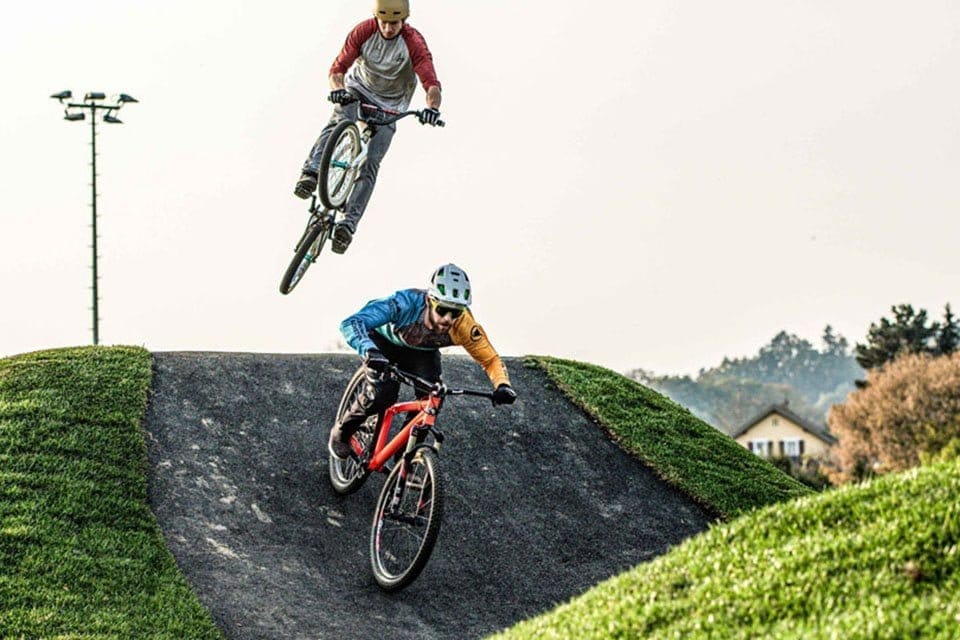
Design & Construction: How Pump Tracks Are Built
Building a pump track involves several key steps:
- Site preparation: Remove topsoil, replace with compacted stone base; ensure proper drainage so water doesn’t pool.
- Shape formation: Use machinery and manual labor to sculpt rollers, berms, and transitions according to the intended track layout.
- Surface application: For asphalt tracks — a layer of frost-resistant material is paved over the shaped base, creating a smooth, hard surface.
- Finishing touches: Bank sides are often planted with grass to prevent erosion, and drainage systems are installed to manage water runoff.
For simpler (and budget-conscious) dirt tracks, construction is much quicker — but ongoing maintenance and weather effects remain challenges.
Even with concrete tracks, construction is more complex (formwork, shotcrete), making them less popular compared to asphalt versions.

Safety, Competitions & Growing Recognition
Though pump tracks may look adventurous — with bumps and banked curves — they’re generally very safe, especially compared to many wheeled-sports environments. Properly designed tracks follow safety and playground standards, making them suitable even for children. Certified asphalt tracks often meet regional standards for public play and sports areas. Not convinced? Read everything you ever needed to know about Pump Tracks and Safety.
Pump tracks are also gaining status as a competitive discipline. With growing popularity and standardised track designs, riders can compete in head-to-head or time-trial formats. In fact, the international governing body for cycling, Union Cycliste Internationale (UCI), now recognises pump track riding — paving the way for national, continental, and world-level competitions.
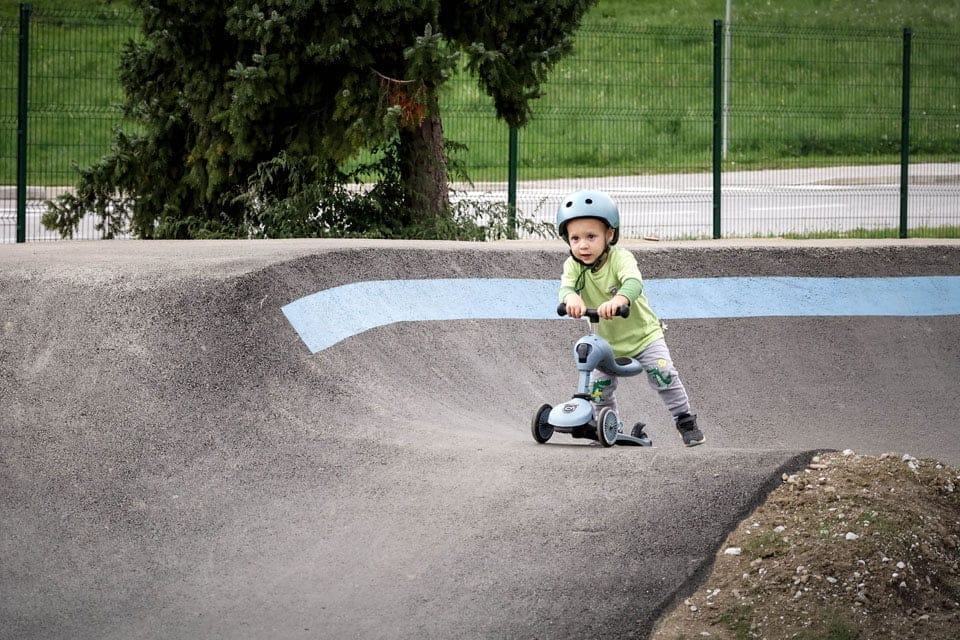
Why Communities Should Invest in Pump Tracks
Pump tracks bring together fun, fitness, skill development, and community spirit. They’re inclusive — welcoming people of all ages and skill levels — while also being accessible, low-maintenance, and urban-friendly.
Whether you’re planning a public park, a school yard, a community hub, or even a private facility, a well-built pump track can deliver years of joy, health benefits, and social value.
If your community is considering a new recreational asset, our team can help you plan, design, and build a pump track that meets your goals — connect with us to get started.


